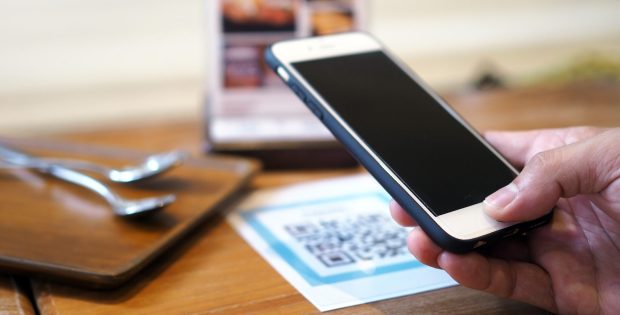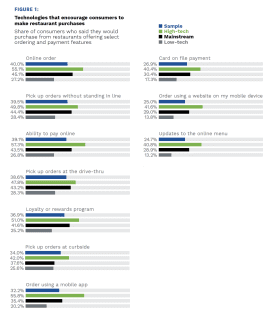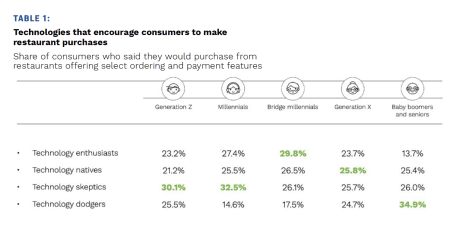PYMNTS Intelligence: How Digital Ordering and Payment Tools Drive Customer Loyalty and Trust on- and Off-Site at Casual Dining Chains and QSRs

The pandemic has affected few businesses as dramatically as those in the restaurant sector. Many players in the quick-service restaurant (QSR) industry have spent the past two years investing in off-premise channels, digital tools and enhanced efficiency to remain profitable as they work to maintain the health and safety of customers and employees alike.
Dining rooms shuttered during the health crisis’s earlier months, resulting in less foot traffic and pushing restaurants to find ways to entice diners ordering from the comfort of their cars or homes rather than entering storefronts. Kitchens, however, ramped up production as QSRs augmented or added drive-thru services, curbside pickup and partnerships with third-party delivery platforms to shore up revenue.
Waves of reduced viral risks throughout the pandemic have encouraged diners to revisit their favorite restaurants in person, however. The increased volume that resulted from this shift, despite customers’ continued reliance on digital and drive-thru ordering methods, has forced restaurants to manage more orders than usual across all channels. QSRs have been tasked with recalibrating their operations to accommodate a roughly 25% to 35% increase in drive-thru sales, for example.
Restaurants are staying attuned to these shifts. An August 2021 report found that roughly half of businesses, including restaurants and bars, had begun offering new products and services to adapt to customers’ changing needs. These are wise moves, considering that many diners have grown accustomed to tapping a few buttons on a mobile app to have their favorite burgers, fries or tacos delivered or prepared for pickup.
Even customers who have returned to dining indoors still expect restaurants to offer the latest contactless tools and innovations. Many chains have turned to in-store technology to facilitate these experiences for their customers, including user-friendly ordering and payment kiosks and QR code-based menus that customers can access via mobile device.
The pivot to digital technology thus appears to have staying power. A recent PYMNTS survey found that consumers were much more likely to order from their favorite restaurants online or via mobile devices — and use contactless ordering and payment options — than they were before the pandemic started. Forty percent said simply having access to online ordering tools would make them more inclined to order from a specific restaurant.
Offering this technology may even be the key to brand loyalty, in fact. The same survey found that 30% of QSR patrons have at least one restaurant-specific app on their phones, and roughly 20% of customers indicate that online ordering or payment features would make them more likely to spend money at a restaurant. This month’s PYMNTS Intelligence examines how QSRs and casual dining chains use digital strategies to change both the on-premise and off-premise dining experiences and how technologies drive customer loyalty.

An Appetite for Technology When Placing Orders
PYMNTS’ research revealed that consumers who leverage a greater number of digital devices are more likely to seek out restaurant technologies and be satisfied with the eateries that offer them. As high-tech consumers tend to be more loyal, restaurants that offer a suite of digital ordering and payment features are much more likely to encourage these digitally savvy patrons to actively use loyalty programs.
High-tech consumers tend to own 11.8 devices on average. Meanwhile, low-tech consumers tend to own on average just 2.8 devices, often smartphones and computers. Mainstream consumers also rely on smartphones and computers, but also tend to own smart TVs, gaming consoles or tablets.
Demographic differences are also a factor when it comes to technology usage. Diners from all generational subgroups, for example, have embraced technology to streamline their dining experiences, but the extent to which they engage with it varies. Approximately 30% of bridge millennials and 27% of millennials can be classified as technology enthusiasts, meaning they would be inclined to boost their spending at restaurants that offer nine or more technologies. Restaurants would do well to take note of this trend, as bridge millennials, in particular, are fond of technology and old enough to be in their prime earning and spending years. This compares to just 14% of baby boomers and seniors who are classified as technology enthusiasts.
Other technology personas include natives, who would select five to eight technologies; skeptics, who would select two to four technologies; and dodgers, who would select zero to one.
Ease of use and better rewards seem to be prime incentives for customers to use digital offerings. Eighty-two percent of respondents in one study agreed that having an easy-to-use website is important, and 76% said an easy-to-use mobile app was crucial. These findings are especially telling because research shows that restaurants offering digital apps with the most comprehensive suites of features and loyalty programs tend to draw the most business.
The Future of Casual Dining
While it is unclear exactly which ordering technologies will curry favor with QSR and fast casual customers once the pandemic wanes, examining any given fast-food dining location offers several clues. In-store ordering kiosks, for example, allow diners to order and pay for their meals with virtually no interaction with cashiers or servers. Some restaurants are offering QR code-based menus that allow customers to access menus, ordering options and payments via mobile device, though many consumers still have a way to go before they warm to the technology.
Nevertheless, the restaurant industry must find a way to marry customer service and safety, as research shows that contactless interactions will only grow in popularity among consumers. One report suggests that 80% of ordering, checkout and payment services will be entirely contactless by 2024, which could create challenges for an industry built on the concept of hospitality as labor shortages and food costs rise.
QSRs and fast-casual eateries still have myriad opportunities to connect with customers, and many are planning to leverage a mix of features to bring customers through their doors again and again. These incentives already include offerings such as coupons and special items delivered via text messages or push notifications as customers enter a location. Servers, cashiers and store ambassadors also may be used more as educators in the years ahead, greeting diners and walking them through the process of ordering and paying electronically.
Digital transformation has been a game-changer for the restaurant industry in the past two years, and many of the tools and payment methods consumers have picked up during that time are sure to factor into their preferences for years to come. It will be up to QSRs to invest in and experiment with the tools that give consumers a chance to bring their digital ordering and payment habits with them — wherever they are.

